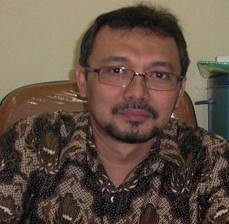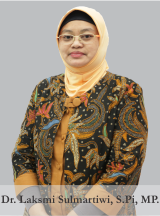Analysis of The Heavy Metal Content of Copper (Cu) in The Sediments and Leaves of The Avicennia marina Mangrove in The Wonorejo Mangrove Ecotourism Area, Surabaya
Downloads
Mangrove plants have the ability to accumulate heavy metals and help reduce the concentration level of pollutants in water. Sediment and leaves of Avicennia marina have the potential to be indicators of the heavy metal copper content in an area. The aim of this research is to determine the content of the heavy metal copper in soil sediments and leaves of the Avicennia marina mangrove in the Jagir River and Avur River in the Wonorejo Mangrove Ecotourism Area. The research method used is a descriptive method with a field survey. Sampling was calculated starting from the Jagir River flow in the Wonorejo Mangrove Ecotourism area (points A1, A2, A3) and the Avur River flow in the Wonorejo Mangrove Ecotourism area (points B1, B2, B3). Analysis of heavy metals in samples using Atomic Absorption Spectrophotometry (AAS). The test results showed that the highest content of the heavy metal copper (Cu) in the sediment and leaves of Avicennia marina Jagir River were 21.05 ppm and 16.10 ppm respectively. The highest content of the heavy metal copper (Cu) in the sediment and leaves of Avicennia marina in the Avur River in the Wonorejo Mangrove Ecotourism Area, Surabaya is 20.50 ppm and 17.10 ppm. The correlation coefficient for sediment and leaves of Avicennia marina in the Jagir River is 0.822 and in the Avur River is 0.829. The correlation between sediment and Avicennia marina leaves is positive with a very strong correlation.
Badan Perencanaan Pembangunan Kota Surabaya (BAPPEKO). (2018). Keanekaragaman spesies mangrove di Indonesia: Studi pendahuluan pengkayaan spesies mangrove Kebun Raya Mangrove Surabaya. Surabaya: Badan Perencanaan Pembangunan Kota Surabaya.
Canadian Environmental Quality Guidelines. (1999). Canadian sediment suality suidelines for the protection of aquatic life: summary tables, Canadian environmental quality guidelines. Winnipeg: Canadian Council of Ministers for the Environment.
Rahmawati, D. (2014). Mangrove conservation area in Wonorejo. Disajikan dalam CommTECH Camp Highlight 2016: Strands of Sands Surabaya, Institut Teknologi Sepuluh Nopember.
Indriyanto. (2005). Ekologi hutan. Jakarta: Bumi Aksara.
Keputusan Menteri Negara Lingkungan Hidup Nomor 51. (2004) tentang baku mutu air laut.
Kumar, J. I. N., Sajih, P. R., Kumar, R. N., George, B., & Viyol, S. (2010). An assessment of the accumulation potential of lead (Pb), Zinc (Zn) and cadmium (Cd) by Avicennia marina
(Forssk.) Vierh in Vamleshwar mangroves Near Narmada Estuary, West Coast of Gujarat, India. World Journal of Fish and Marine Sciences, 2(5):450-454.
Parvaresh, H., Abedi, Z., Farhchi, P., Karami, M., Khorasani, N., & Karbassi, A. (2010). Bioavalability and concentration of heavy metals in the sediments and leaves of grey mangrove, Avicennia marina (Forsk.) Vierh, in Sirik Azini Creek, Iran. Biological Trace Element Research, 143:1121-1130.
Poedjirahajoe, E., Marsono, D., & Wardhani, F. K. (2017). Penggunaan principal component analysis dalam distribusi spasial vegetasi mangrove di Pantai Utara Pemalang. Jurnal Ilmu Kehutanan, 11(20):29-42.
Richards, R., Chaloupk, M., Sanòa, M., & Tomlinsona, R. (2011). Modelling the effects of coastal acidification on copper speciation. Ecological Modelling, 222:3559-3567.
Wulan, S., Thamrin & Amin, B. (2013). Konsentrasi, distribusi dan korelasi logam berat Pb, Cr dan Zn pada air dan sedimen di Perairan Sungai Siak sekitar dermaga PT. Indah Kiat Pulp and Paper Perawang-Propinsi Riau. Riau: Pusat Penelitian Lingkungan Hidup Universitas Riau.
Copyright (c) 2023 Journal of Marine and Coastal Science

This work is licensed under a Creative Commons Attribution-NonCommercial-ShareAlike 4.0 International License.













